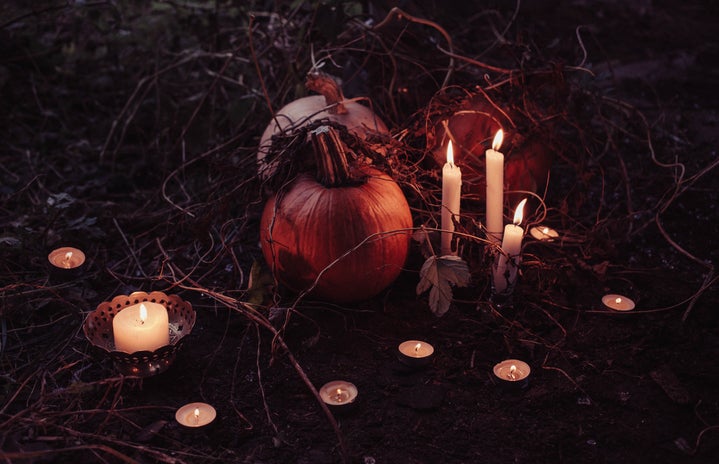Every year, we wear our costumes, eat profuse amounts of candy, carve jack-o-lanterns, and revel in the feeling that it’s finally fall, but the Halloween that we Americans have come to enjoy had a much more ancient start.
The history of Halloween goes all the way back to an ancient Celtic festival called Samhain. This festival celebrated the changing of the seasons, and it was a time in which Celts in Ireland would have begun preparing for the winter by harvesting crops and rounding up animals, but it was also a time for feasting as there was great abundance following harvests. Many historians believe that the festivities would have also included animal sacrifices, dancing, and costumes of animal skins. Additionally, Samhain was a highly spiritual period, as druids, religious leaders among the Celts, would practice divination during the celebration as they believed their connection to the Celtic Otherworld was stronger during Samhain.
Obviously, the celebrations that take place at the end of October and the beginning of November have changed quite a bit since Celtic times. With the introduction of Christianity to Ireland in the 5th century came the syncretism of pagan culture with Catholic beliefs and practices. The Catholic Church created All Saints Day or All Souls Day, likely as an attempt to convert many Celts, and this holiday has continued to be celebrated in a similar fashion to that of Samhain all the way into modern day.
Samhain in Celtic Ireland, All Saints Day in the Catholic World, Día de Los Muertos in Mexico, Ognissanti in Italy, the Barriletes Gigantes in Guatemala; these celebrations are all ways that people try to connect to the past, bridging the gap between the dead and the living. Death and the afterlife are seen differently across all cultures in the world, but the permeating reverence for the spiritual world is evident through traditions like the honoring of a long-deceased saint in Catholic memory or the connection of a family to their deceased loved ones through an altar such as an ofrenda in Hispanic culture.
In the United States, Halloween has transformed into a fun night at the end of October where we trick-or-treat, run around in extensively planned costumes, and force ourselves to suffer through a haunted house. The spirituality of a holiday about death has nearly vanished, but we still see some similar practices that go back to the Celts from the syncretism that occurred between pagans and Catholics. We still invoke the supernatural in our costumes like the Celts in their animal skins, feast on candy and themed Halloween foods as a reflection of the feasts of the past, suddenly want to go walking through corn fields almost to feel harvest in the air, and carve our pumpkins with frightening faces like how the Irish carved turnips for Samhain during the Irish Potato famine when pumpkins were lacking. The past is very alive, especially on nights like Halloween where it is almost like the dead come to life, both in costume and memory.
So, when we dress up as pirates or fairies and go to parties decorated with plastic spiders, caution tape, and bats hanging from the ceiling, we are engaging in a long past of celebrations at the turning of the seasons. Whether our fall is about frolicking in the leaves or spending time with family, our experiences are precious and memorable, and we are deserving of a time to celebrate something.


